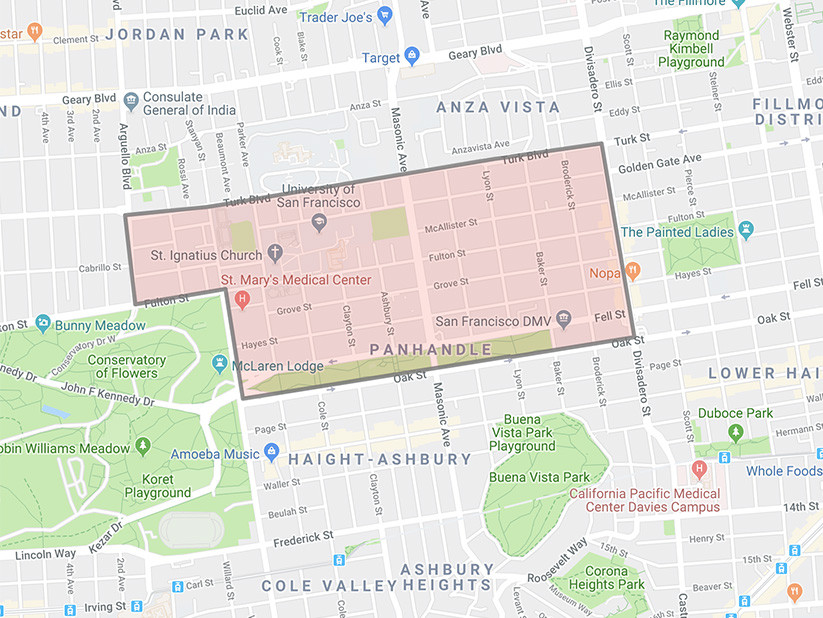NOPA Neighborhood

In the center of the city is the eclectic and diverse neighborhood known as North Panhandle (NoPa). Bounded by Masonic Avenue to the west and Stanyan Street to the east, the neighborhood is undergoing a rebirth as newcomers discover a community where culture comes together in this urban mixing bowl.
NoPa is a neighborhood that rewards entrepreneurs with large dreams and low budgets willing to take a gamble on new retail establishments, art galleries, coffee shops, and restaurants. The eclectic energy of the district is most noticeable in the blocks where tattoo parlors and day-care centers do business next to old-school barbershops, while tiny urban parklets provide plants and cafe seating.
The cafes that best capture the improvised, can-do spirit of the community includes Bean Bag Cafe, which sells coffee, crepes, and salads; and Mojo Bicycle Café, a handmade drip-coffee vendor combined with a bike store and repair shop. The best Ethiopian food in the city can be found at Club Waziema. And there's upscale nopa, serving simple, rustic food in a swanky setting. The neighborhood’s nightlife scene is anchored by The Independent, a club that features a variety of bands. There's the quarterly Divisadero Art Walk celebrating the upstart galleries, and the weekly Divisadero Farmers' Market on Grove Street, offering fresh fruits and vegetables, as well as local cuisine and entertainment. A neighborhood association is actively forming meetings and playgroups for parents of toddlers.
History
:max_bytes(150000):strip_icc():format(webp)/GettyImages-576840632-57d079e05f9b5829f4146e13.jpg)
Getty Images
The neighborhood’s name is relatively new. It was often lumped together with the Western Addition until a few years ago when real estate agents rebranded it to appeal to young techies looking to settle down in the city. It’s always been north of the Panhandle though, which was created in 1870. Before that, it was just the start of the field of sand dunes that led to the Pacific Ocean deemed the “Outside Lands.” It was civil engineer and designer of Golden Gate Park William Hammond Hall who discovered that planting barley helped solidify the sand enough to serve as the park’s foundation.


